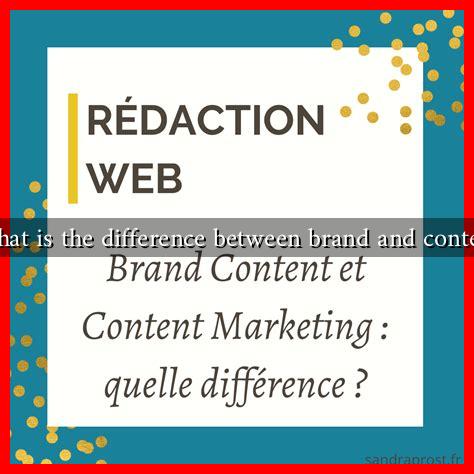-
Table of Contents
What is the Difference Between Brand and Content?
In the ever-evolving landscape of marketing, the terms “brand” and “content” are often used interchangeably, yet they represent distinct concepts that play crucial roles in a company’s success. Understanding the difference between these two elements is essential for businesses aiming to create a cohesive marketing strategy. This article will explore the definitions, purposes, and examples of brand and content, providing valuable insights into how they interact and complement each other.
Defining Brand
A brand is more than just a logo or a name; it encompasses the overall perception of a company in the minds of consumers. It is the emotional and psychological relationship that a business establishes with its audience. Key components of a brand include:
- Identity: This includes the visual elements such as logos, colors, and typography that represent the brand.
- Values: The principles and beliefs that guide a company’s actions and decisions.
- Voice: The tone and style of communication that reflects the brand’s personality.
- Experience: The overall interaction a customer has with the brand, from customer service to product quality.
For example, Apple is not just known for its products; it has cultivated a brand that represents innovation, quality, and a premium lifestyle. This brand identity is reinforced through its marketing campaigns, product design, and customer experience.
Understanding Content
Content, on the other hand, refers to the information and experiences that are created and shared to engage an audience. It can take various forms, including:
- Blog Posts: Articles that provide valuable information or insights on specific topics.
- Videos: Visual content that can entertain, inform, or educate.
- Social Media Posts: Short-form content designed for platforms like Instagram, Twitter, and Facebook.
- Podcasts: Audio content that allows for in-depth discussions on various subjects.
The primary purpose of content is to inform, entertain, or engage an audience, ultimately driving them toward a desired action, such as making a purchase or signing up for a newsletter. For instance, HubSpot, a leader in inbound marketing, produces a wealth of content that educates its audience on marketing strategies, thereby establishing itself as an authority in the field.
The Relationship Between Brand and Content
While brand and content are distinct, they are interdependent. A strong brand informs the type of content a company produces, while effective content can enhance brand perception. Here are some ways they interact:
- Brand Storytelling: Content can be used to tell a brand’s story, helping to create an emotional connection with the audience.
- Consistency: Consistent messaging across all content reinforces brand identity and builds trust with consumers.
- Engagement: Engaging content can enhance brand loyalty by keeping customers connected and invested in the brand.
For example, Nike uses powerful storytelling in its content marketing to convey its brand values of perseverance and empowerment. Campaigns like “Just Do It” not only promote products but also resonate with consumers on a deeper level.
Statistics Highlighting the Importance of Brand and Content
Understanding the significance of brand and content can be illustrated through various statistics:
- According to a study by Nielsen, 59% of consumers prefer to buy new products from brands familiar to them.
- Content marketing generates three times more leads than traditional marketing, as reported by the Content Marketing Institute.
- Brands that engage in storytelling can increase their sales by up to 30%, according to research by the Harvard Business Review.
Conclusion
In summary, while brand and content are often conflated, they serve different purposes in the marketing ecosystem. A brand represents the overall perception and emotional connection a company has with its audience, while content is the medium through which that connection is fostered. By understanding the differences and interdependencies between brand and content, businesses can create more effective marketing strategies that resonate with their target audience. Ultimately, a strong brand combined with compelling content can lead to increased customer loyalty, higher sales, and long-term success.
For further reading on the importance of brand and content in marketing, you can explore resources from HubSpot and the Content Marketing Institute.


